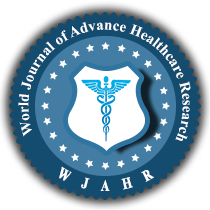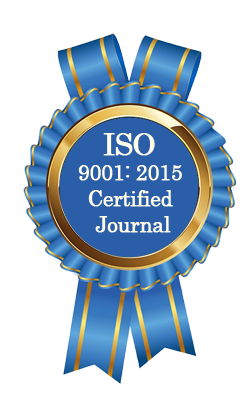| All | Since 2020 | |
| Citation | 105 | 60 |
| h-index | 4 | 4 |
| i10-index | 3 | 2 |
WJAHR Citation 
Login
News & Updation
Best Article Awards
World Journal of Advance Healthcare Research (WJAHR) is giving Best Article Award in every Issue for Best Article and Issue Certificate of Appreciation to the Authors to promote research activity of scholar.
Best Article of current issue
Download Article : Click here
Indexing
Abstract
CLINICOPATHOLOGICAL ASSESSMENT OF PIGMENTED SKIN LESIONS IN A SAMPLE OF IRAQI PATIENTS
*Shams M. Abbas, Ban J. Qasim and Alaa G. Hussein
ABSTRACT
Background: Pigmented skin lesions (PSLs) refer to lesions that are black, brown or blue in color. A number ofpigmented lesions are difficult to classify because of wide spectrum of histological appearances and raise thepossibility of a melanoma. Methods: A retrospective study including analysis of 100 randomly selected samplesof pigmented skin lesions sent to the Teaching Laboratories of Al-Emamain Al-Kadhmain Medical City (AS) andMedical city from January 2019 to July 2023. Objectives: This study aims to assess the type of pigmented skinlesions in a sample of Iraqi patients in correlation with clinicopathological parameters (age, gender, site, size,color, histological type). Results: regarding age, most of the studied sample were in age group 61-70 years(20.0%). As for gender, male: female ratio were 1:1. Head and neck region were the mostly effected site includingcheeks (12.0%), eyelid (12.0%) and nose (11.0%). most lesions were smaller than 1 cm in size (43.0%) and brownin color (68.0%). non melanocytic lesions(80.0%) were more common than melanocytic lesions(20.0%) with mostcommon pigmented lesion were basal cell carcinoma (32.0%). Conclusion: Non-melanocytic lesions is morecommon than melanocytic lesions while benign and malignant lesions were nearly equal in incidence, the mostcommon benign lesion were benign melanocytic nevi which show female predominance in second decade of lifedistributed over the face, while the most common malignant pigmented lesion were basal cell carcinoma whichshow male predominance in 5-7th decade of life mostly on the nose.
[Full Text Article] [Download Certificate]
